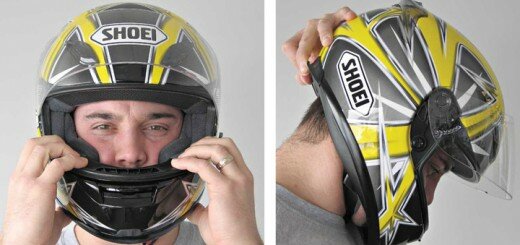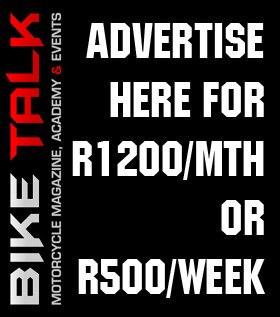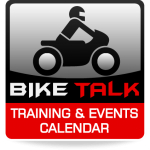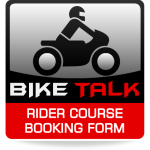Among all motor vehicles, motorcycles are the most vulnerable on the road. As motorcycles do not have seat belts, you can be thrown off your seat in a crash, which can result in serious injury or even death. Imagine your chance for survival if a truck strikes you, or if you strike it. Hitting a truck is like hitting a steel wall. However, your chance for survival will be increased if you wear a helmet and follow the safety tips below when riding your motorcycle.
WATCH THE NO-ZONES
Never hang out in a truck’s blind spot or “No-Zone.” Trucks have large No-Zones on both sides, the front and behind the truck. Truck drivers cannot see you when you ride in these blind spots, which allows for a greater chance of a crash. The front blind spot is particularly dangerous if you need to stop quickly. Because of their lightweight and braking system, motorcycles can stop much faster than trucks. A truck may not be able to stop as quickly as you do, so you need to take special precautions to avoid crashes before they happen.
ALWAYS WEAR A HELMET
Make sure to always wear a good quality helmet, and secure it to your head. Beware of helmets that do not meet the correct safety standards. Helmets are the most important piece of equipment you can wear when riding your motorcycle. A helmet could be your only source of protection in a serious crash.
RIDE TO SURVIVE
Motorcycles are the smallest vehicles on the road. Unfortunately they provide virtually no protection in a crash. Other drivers may not see you on your motorcycle, so you must be aware of everything on the road. Be extra cautious, paying attention to the signals and brake lights of other vehicles, especially trucks. However, you still need to be prepared in the event their signals or lights don’t work. Ride with caution and drive defensively. Even though your motorcycle may be small, you must adhere to the laws of the road. Never ride in between lanes in traffic or share a lane with another vehicle. Don’t instigate aggressive driving with other motorists; you will only increase your chance of a crash.
CHECK YOURSELF AND YOUR BIKE
Conduct a safety inspection of your motorcycle before each ride, and wear protective clothing including gloves, boots and a jacket. Proper maintenance and protective clothing will help reduce your chance of a crash or the severity of injury if you are involved in a crash, especially with a large truck or bus.
WATCH YOUR SPEED
Of all vehicles, motorcycles accelerate the fastest, while trucks and buses are the slowest. Please watch your speed around trucks, especially in bad weather or at night. Colliding with the back of a truck will end your riding days.
100 STEPS TO MOTORCYCLE SAFETY
There are certain strategies that could enhance road safety amongst motorcycle enthusiasts. Although traffic conditions and the obstacles faced might differ somewhat from location to location the basics remain the same.
TRAFFIC STRATEGIES
It’s almost always necessary to share the road with other users, but sharing has its limits. To keep the wind in your face and everything else out, here are some useful tips:
- Time Things – A good pass on a two-lane road takes no more than six seconds. How long does it take to cross an intersection? How do I accelerate to freeway speed?
- Estimate Times – How far away is that oncoming car or that blind crest? Knowing could save your butt.
- Don’t Tailgate – When the preceding vehicle passes a fixed object count off: “one thousand one…one thousand two…” If you get there before “two” you’re following too closely.
- Project Each Car’s Path of Travel – See a car poking out of a driveway? Put your bike where it can’t reach you.
- Formation – In twisties or anywhere manoeuvring within your lane is likely to become necessary.
- Late Apex – By starting on the outside of a curve and delaying your turn, you’ll not only see farther ahead, you’ll increase your safety buffer in right-hand turns.
- Watch for Cars “Stacking Up” on two-lane roads – there’s always the danger of a car abandoning the pack to pass. Maintain a constant vigil for phantom vehicles and, when you think you’ve spotted one, move to the left. This creates space as well as conspicuity.
- Don’t Follow Behind Obstructive Vehicles – anything that’s hard to see around also makes you invisible to oncoming cars. Stay way back, or better still, let some passenger cars fill the gap.
- Avoid Rush Hour – Pilots have to train for each airport. Don’t try to tackle a strange metropolis when everyone else is pressed for time.
- Observations – Don’t rely on mirrors or peripheral vision. Do one before each lane change.
- Signal Your Intentions – Two full seconds before lane changes; four seconds for turns.
- Keep Left Unless Passing.
- Give Way to Faster Traffic – It’s the civilized thing to do.
- Don’t Speed Through Town – Speed is only a factor if you hit something… and in town there are all sorts of things to hit.
- Avoid Bad Drivers – Give wide berth to anyone who is excessively fast or slow, wanders in their lane or changes lanes without signals.
- Avoid Blind Spots – Keep back; accelerate when necessary.
- Look Up the Road – Maintain a 12-second visual lead; search for the exit or vanishing point of each turn.
- Cover the Front Brake Lever in high-risk areas.
- Cover with One Finger or Two – for emergency stops. Once you’ve started the brake application, you don’t need to release or add fingers.
- Check Your Mirrors When You Slow Down – Look for an escape route, too; the guy behind you might not be so alert.
- Lane Position – The Right Track of 4-wheeled vehicles is your principal lane position… but continually adjusts to changing conditions.
- Beware of Cars Turning Right across Your Path – Slow down; see what the driver’s going to do. Check your right mirror and then move as far to the right as is practical. If the car turns early – brake. If the car turns late – accelerate.
EQUIPMENT TIPS
All you really need is a tank of gas and the open road… if you don’t mind freezing your “crown jewels” off with a broken-down bike in the middle of nowhere. But since getting there is half the fun, here’s some advice to help you and your bike accomplish it:
- Protective Armour – Many types are available, and the jury’s still out on which is best. Armour should conform to anatomy and not slide around. Vulnerable areas are knees, elbows, shoulders and hips.
- “Retro reflective” Material – The stuff with the little glass beads. Helmet, sleeves, pants legs, but especially across your back.
- Eye Protection – Replace scratched shields. Carry a spritzer and soft cloth, and consider a quality defogging solution.
- Electric Vest – Electric clothing is the only way to replace lost body heat while you’re riding.
- Owner’s Manual – Don’t leave home without it.
- Handlebars are not a fashion statement – They’re the primary interface of man and machine. Choose bars that enable you to relax, yet remain in control.
- The Right Seat – What’s comfortable in your living room isn’t what works best on the highway. You want back support and freedom of movement.
- Adjust All Controls – Sit on your bike and close your eyes: Can you reach out and rest your fingers on the clutch and brake levers? How’s the free play in clutch and throttle? Is your front brake firm?
- Lube Cables – Sticky, notchy cables equal clumsy riding.
- Tyre Inspection – Dry rot? Cuts? Foreign objects? How’s your air pressure?
- Tyre Replacement – Forget tread depth; cupped fronts, squared-off rears, uneven wear — all equal yucky handling. Don’t buy tires because racers like them or because they yield the highest mileage; choose the best all-around skins for the riding you do.
- Suspension Tuning – Learn what the various adjustments are for. Make changes one at a time. Change fork oil yearly.
- Roadside Tyre Repairs – Tube Patches, Plugs, Tyre irons, CO2 cartridges. What does your bike require? Never underestimate the dangers of being stranded.
- Downsize – Keep the big bike; get a small one for kicks and skill development.
- Road-Race Gloves – So-called “summer” or “touring” gloves will turn to confetti in a good tumble.
- A Good Helmet – ‘90s helmets have protective liners made of expanded polystyrene nearly 25mm thick. Partial coverage helmets should at least protect the brain stem in back and not slide around on your head. Full-face helmets should have EPS throughout, including the chin bar.
FITNESS
Even if you drank, smoked, doped and womanized your youth away, there’s still time to whip your body into shape and enjoy years of healthy riding Don’t Slouch You’ll injure the ligaments in your back and eventually the disks themselves. When that happens, you won’t ride motorcycles anymore.
- Preserve Your Hearing – Highway cruising will damage your ears unless you have a full fairing or ride with a full-face helmet and earplugs. Consider accessories, which seal off turbulence entering the bottom of your helmet.
- Do an “Arm Check” – Tension makes your arms stiffen and rise, degrading your steering and throttle control. Keep wrists down and let elbows fall naturally to your sides.
- Avoid Fatty Foods – Fat molecules attach themselves to your red blood cells and deprive your brain of oxygen.
- Avoid Caffeine – When you’re tired, try exercising to stimulate blood circulation. If that doesn’t work, you need rest.
- Pack a First-Aid Kit.
- Take a First-Aid Course – Phone your local Red Cross or ER24/EMS branch.
- Stretch Frequently – Get a good book on yoga.
- Push Your Bike – If you catch a chill, this is a great way to elevate your body temperature. But don’t allow yourself to become sweaty in cold weather.
- Listen to Your Body – Not only can fatigue cause accidents, but riding with pain can cause permanent damage, such as back injuries and carpal tunnel syndrome. Shivering is the first stage of hypothermia.
- Windproof Yourself – Buy a good quality riding suit, but in a pinch you can throw on your rain suit and even duct tape any gaps which allow heat to escape.
USEFUL ADVICE AND INFORMATION
There’s a deep pool of knowledge where common sense and experience converge. Some wise words passed along to me:
- Motorcycle Rider Courses – The way to improve complex skills is to perfect basic ones.
- Refresher Rider Courses – Find out where the best instructors teach and what they offer.
- Advanced Courses – There may be an academy that is run on a racetrack. What better way to explore your limits and those of your bike?
- “You’ve got to Go Slow to Go Fast” – I think it was Reg Pridmore who said that. Never ride in a hurry.
- Buy a Dirt Bike – This is the very best way to unlock the mysteries of traction control. If you’ve never ridden off road, consider an organized dual sport tour and take off-road courses.
- Warm Your Bike’s Engine – A stalled engine in the wrong place can be a disaster.
- Pack Lightly – It’s hard to be smooth on an overloaded bike. Stay warm, stay dry, compromise on everything else.
- Limit Group Size to Four Riders – Fewer delays, fewer bad habits and less chance of a serious accident.
- Develop Simple Rules and Signals for Group Riding.
- Find a Good Passenger – Passengers are the most perfectly balanced form of cargo. They also force you to shift smoothly, remind you to ride sensibly, keep you from making wrong turns and may reward you with a soothing massage after a nice ride.
- Imagine Yourself “Down In” Rather Than “Atop” Your Bike – Total relaxation can actually lower your centre of gravity, and that makes your bike handle better.
- Organize Emergency Information – Phone numbers, insurance, medical information, etc.
- Respect Unfamiliar Bikes – No matter how experienced you are, your risk is greater when you switch bikes. Give yourself more time and space to compensate for unfamiliar equipment.
- Avoid the Causes of Speed Wobbles – Worn tires, loose bearings, accessories – especially handlebar mounted fairings and windshields. These and other things can cause your bike to go out of control at high speeds. Got that? High Speeds!
- Read – Information is power; try to find out more!
- Question What You Read – Moto journalists get theirs for free. Owner’s club news editors think there’s only one brand of bike. Academics have to publish or perish.
- Read Road Surfaces – Look for composition, texture, camber, contaminates.
- Go Sport Touring – Lots of great athletes train in the mountains, and these days there are numerous possibilities for organized tours and rentals.
- Devise a Test Course – Take a loop you travel regularly and evaluate your braking, shifting, turning… especially tricky situations which require combination manoeuvres.
- Limit Night Riding – Bouncing, tilting motorcycle headlights can’t equal the uniform illumination that car lights provide. Ride your challenging roads by daylight.
- Choose Good Riding Partners – Avoid whiners, drunks and people who don’t read motorcycle magazines.
- Insurance Coverage – Health, life and motorcycle; don’t wait until you’ve had an accident.
- Learn from Good Riders – Observe their actions and ask questions.
- Ride Your Own Ride – No matter how much you respect another rider, devise your own strategies and allow time to execute at your rate.
- Let Your Buddy Ride His or Hers – Be patient and don’t wave him or her through anything he can’t see for him or herself.
SKILLS YOU SHOULD PRACTICE
There was a boy named Clem whose parents sent him to French boarding school and later to Harvard. But he never learned a useful skill and wound up a broken-down Moto journalist. Education cannot help you if you don’t hone practical skills.
Here are some to work on:
- Stopping on a Line – You should be able, with one smooth brake application, to stop the bike where you want — hard or gently — at low speeds or high.
- Emergency Stops – Don’t call them “panic” stops. Learn to calmly stop in the shortest possible distance. Research shows that 30 mph is the most common pre-crash speed.
- Counter steering – Push left/Go left. Push right/Go right. It sounds counter-intuitive, but you can handle it. And you don’t push down; it’s forward.
- Counterbalancing – Lean your body out as you lean your bike in. This useful skill will add stability to low speed turns. Offset weaves are a good practice drill.
- Swerving – Vigorous counter steering combined with a loose riding position that enables the bike to work independently of your body.
- Weaving – A good way to relieve boredom on empty stretches of road. Use your hips as well as counter steering.
- U-Turns – Exaggerate your head turns and try to turn in one quick motion.
- Curbside Pull Outs – Back your bike to the curb at a 40-degree angle. Lean and turn handlebars as far as you’re comfortable. Plant your inside foot and place your outside foot on the peg. Look back over your shoulder and pull away without dabbing or hesitating.
- “Swooping” – Pick a curvy, hilly stretch of road and set your entry speed using only your throttle, not your brakes.
- Riding Slowly – “Balance” actually comes from manipulation of clutch, throttle, brakes and steering… skills that will serve you well at all speeds.
- Throttle Steering – Use throttle roll-on to straighten your bike and guide it to the proper exit position on the outside of the turn.
- Rear Brake to Control Chassis in Turns – Instead of snapping the throttle shut for tight turns, try holding it open partially and applying a little rear brake.
- Mid-turn Connections – If you’re in too hot, turn your head more, push harder on the handlebar, but don’t close the throttle.
- “Feathering” the Clutch – The dirt rider’s trick for controlling power surges and drive-line lash. The key is “pressure,” not “motion.”
- Brake/Throttle Transitions – To keep your chassis stable, smoothly begin one as you’re trailing off the other. Grip the throttle lightly and glide your fingers around the brake lever “cam like” instead of squeezing directly.
- Up shifting – Don’t squeeze your clutch lever so far. You only need to squeeze it to the friction point. In fact, smooth, quick up shifts don’t require clutching at all on most bikes. Try it.
- Downshifting – By “blipping” the throttle quickly raising the rpm to the correct engine speed for the lower gear you eliminate the need for a slow burn on the clutch.
- Brake and Downshift Simultaneously – This one is tricky — requires combining.
- Accelerate – Changing speed and direction are your only physical defences. Can you up-shift without “bobbing” the fork during max acceleration?
- Stop on a Curve – You must straighten quickly to stop quickly… but you cannot fully straighten before braking (you’d be off the road). Trick is to smoothly increase brake pressure as you decrease lean angle.
- Impending Skid – Learn the signs: faint chirping or squirminess of the front tire. It’s possible to ease off slightly… but if it actually locks, you’ll have to release (you can keep the rear brake locked). Try various surfaces and remember: hard braking on the front lightens the rear.
- ABS Stops – Slam them on; it feels weird, so you’d better get used to it. Try it on all types of surfaces… but — uh — first make sure you actually have anti-lock brakes, and you’re not cornering.
- Slide Down a Hill – You can learn to control a locked rear brake by slowly sliding down a wet, grassy hill or other slippery surface. Of course you can also learn a more valuable lesson… how not to lock it.
- Integrated Braking – use both the hand lever and foot pedal every time you brake. Otherwise you won’t have the necessary skills when you need to stop quickly.
- Practice Switching the Fuel Valve to Reserve – If you still ride one of these — So there I was in lane four of the Freeway on this weird Ducati, traffic on my left doing about 120 km/h and traffic on the right doing 140 when…
- Throttle Baby – If the rear wheel slides in a turn (from gravel, oil, over acceleration, etc.), don’t snap the throttle shut! Stay on it until you regain traction.
- Buy a New Bike Well – it’s not technically a “skill,” but it will motivate you to ride more and to perfect your skills. It will help your dealer pay his rent and keep food on a Moto journalist’s table. Short of world peace, what more could you ask for?











